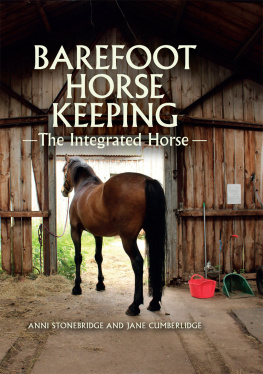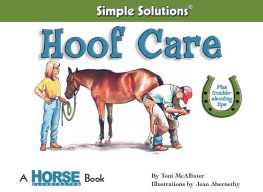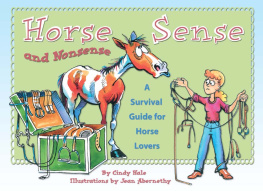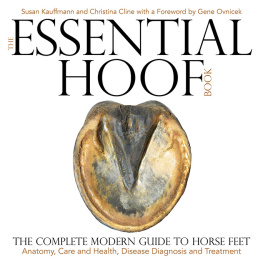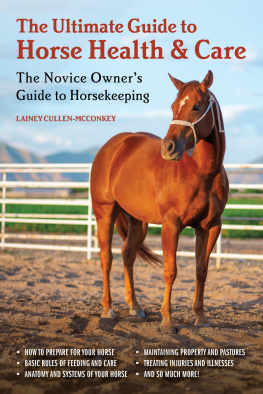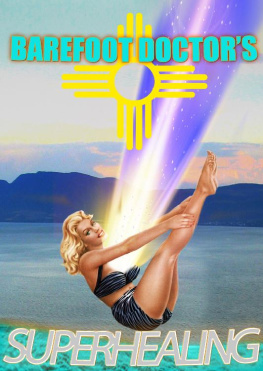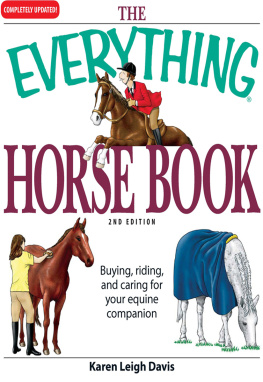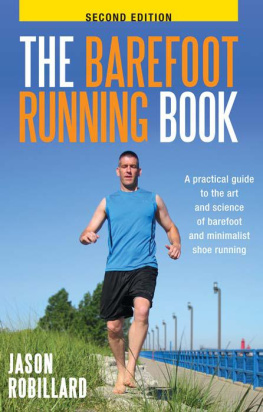BAREFOOT
HORSE
KEEPING
The Integrated Horse
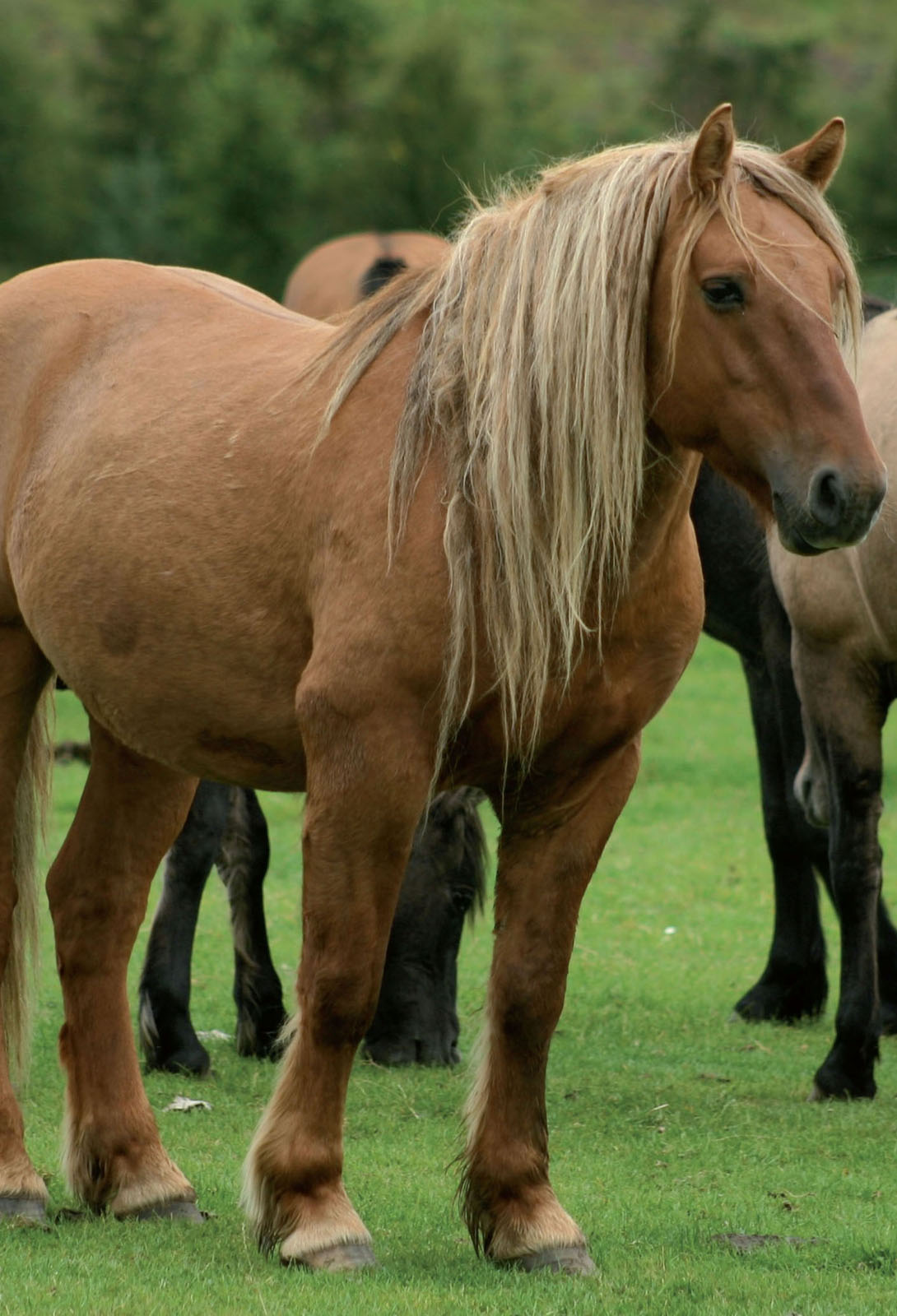
BAREFOOT
HORSE
KEEPING
The Integrated Horse
ANNI STONEBRIDGE AND JANE CUMBERLIDGE

THE CROWOOD PRESS
First published in 2016 by
The Crowood Press Ltd
Ramsbury, Marlborough
Wiltshire SN8 2HR
www.crowood.com
This e-book first published in 2016
Anni Stonebridge and Jane Cumberlidge 2016
All rights reserved. No part of this publication may be reproduced or transmitted in any form or by any means, electronic or mechanical, including photocopy, recording, or any information storage and retrieval system, without permission in writing from the publishers.
British Library Cataloguing-in-Publication Data
A catalogue record for this book is available from the British Library.
ISBN 978 1 78500 174 1
Acknowledgements
Deciding to become a hoof care professional has, quite literally, been life-changing. Choosing to do something that defies convention is never easy, but it has been both rewarding and at times extremely challenging. Numerous people have supported us and been influential in our barefoot journey. The authors would like to express their sincere thanks and respect to: our families and particularly Duncan Stonebridge for providing us with many wonderful photographs that so beautifully illustrate this book; the Barefootworks Co-operative team Dawn Saunders, Liz Angus, Lesley Holehouse and Abi Hogg; the Dinnet Equine Herd Project Wilma and John Doherty, and Cathy Todd; Bob Bowker; Lynda Davey; Brian Hampson; Dan Guerrera; Dorothy Marks; Kerry Ridgway; Mark Johnson; Paige Poss; Peter Laidley; Seaton Baxter; the Equine Sciences Academy; and HCP colleagues both in the UK and internationally, for the thousands of hours of discussions. Finally, we are grateful to our clients and their fascinating horses, without whom this book would not exist.
Contents
Introduction
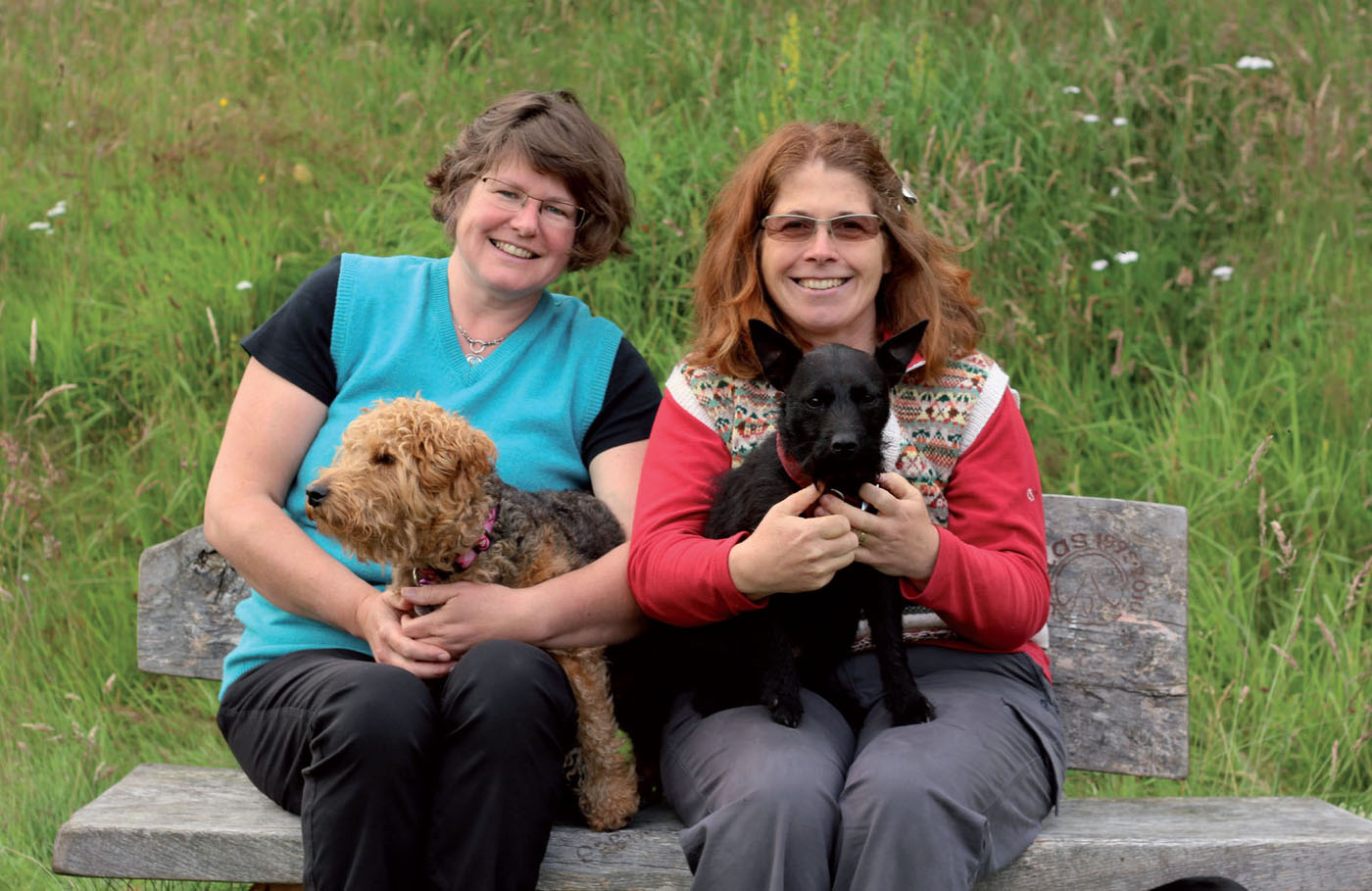
The authors Anni Stonebridge and Jane Cumberlidge, and their dogs.
The rationale behind this book comes from over twenty-five years experience in delivering barefoot hoof care, saddle fitting, behavioural training and rider coaching. The authors have been horse owners, hoof care professionals (HCPs) and educators during this time, and have been intimately involved with the barefoot scene internationally. They apply their scientific education and transfer experience from prior careers to their work. Along with four other long-term HCPs (Dawn Saunders, Liz Angus, Lesley Holehouse and Abi Hogg), they are members of Barefootworks Hoof Care Co-operative.

Barefootworks the UKs first hoofcare co-operative.
Barefootworks was established in 2006 as the first independent hoof care practice in the UK. The Co-operative is an industry group rather than attached to a training organization, but has links in training background and training provision to the Equine Sciences Academy, the American Hoofcare Association, the UK Natural Horse Care Practitioners Association, The School(s) of Barehoof Strategy and the American Association of Natural Hoof Care Practitioners. A cross-training, evidencebased and critical thinking philosophy defines the integrated and holistic services the Co-operative provides, and sets Barefootworks hoof care apart from traditional farriery services and other hoof care providers.
This book is intended to provide a practical, accessible and objective guide to barefoot horse keeping. The content is informed as deeply as possible by empirical research and practice findings. The text is illustrated by photos from the authors records, together with diagrams and graphics, and enhanced with case studies and commentary from other professionals.

Trimming in practice.
Successful barefoot horse keeping requires education, planning and consideration, and can be complex and challenging. Whilst the authors appreciate that a number of readers will choose to perform their own hoof trimming, they strongly recommend that they secure the services of an experienced and educated HCP for regular checks. The authors define an HCP as a trimmer or a barefoot-educated farrier. If things take a turn for the worse, even the most open minded and optimistic owner-trimmer is unwise to take on and manage rehabilitation alone. The action of trimming itself is not difficult, but experience gained from hundreds of horses and thousands of feet allows HCPs to develop acute observational and evaluation skills. Extensive education and continuing professional development also gives HCPs the knowledge to analyse and provide solutions for the problems they encounter. In the authors opinion it is not sufficient for the domesticated horse owner to leave it to Mother Nature, when the horse as a species has been fundamentally removed from its evolutionary origins. Feet respond to environmental pressures and do not know what they need, even in barefoot horse keeping circumstances.
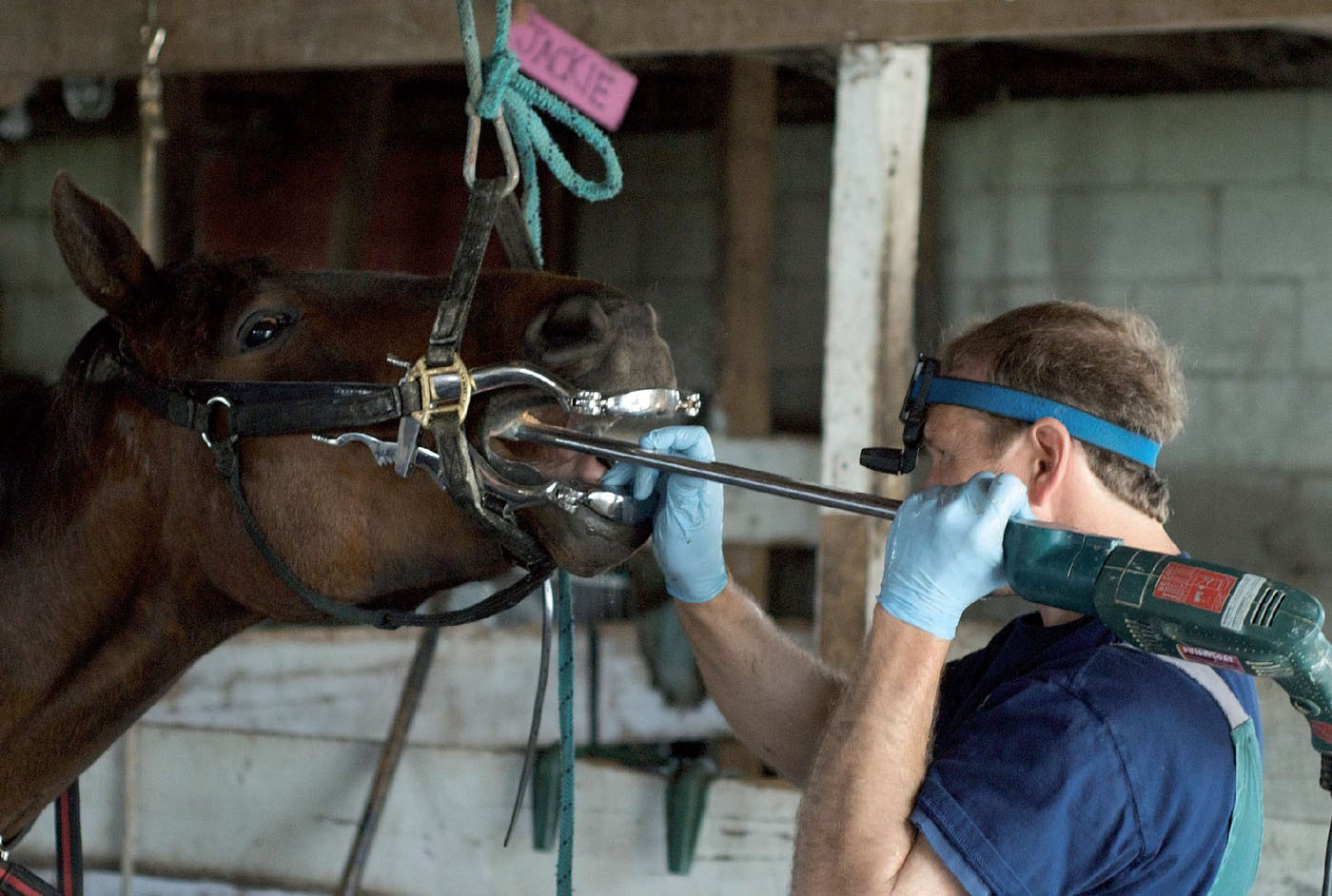
Equine dentistry. Image courtesy of Pete Markham from Loretto, USA (Equine Dentistry) [CC BY-SA 2.0 (http://creativecommons.org/licenses/by-sa/2.0)] via Wikimedia Commons.
It is recommended that anyone choosing to keep their horses barefoot should secure the services of a well recommended support team, including HCP, vet, dental technician, body worker, sympathetic saddler and trainer. The health of the equine foot is intimately related to the health of the rest of the horse. When troubleshooting is needed, in the authors experience a co-operative team of professionals is the best way forward. Even if a horse never requires anything other than routine trimming, body work and dental care, interventions can impact on the entire body. For example, dental balance is vital to addressing movement asymmetry, and body work adjustments will not be maintained if the horse has imbalances in its feet.
THE RISE OF THE BAREFOOT INDUSTRY
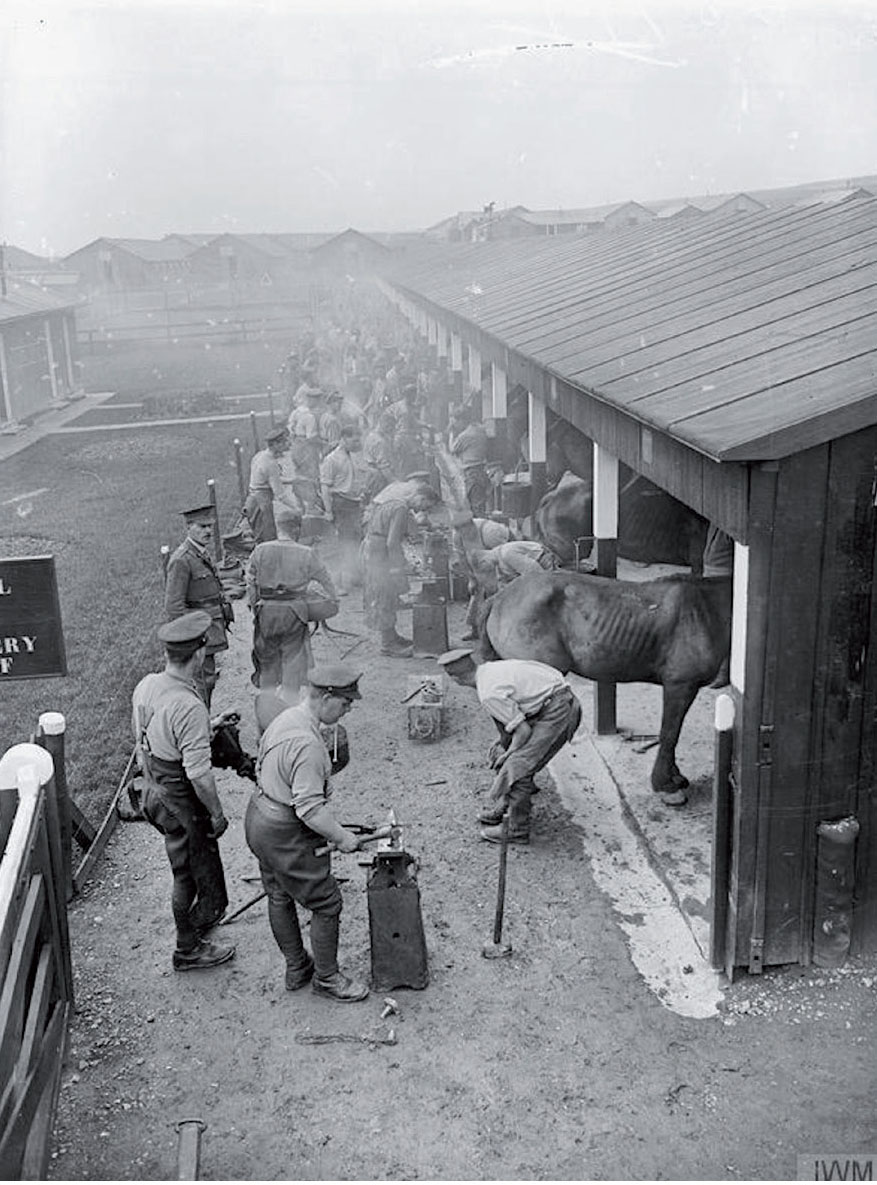
Traditional farriery. Image courtesy of McLellan, David (Second Lieutenant) (Photographer) [Public domain], via Wikimedia Commons
There has been a sea change in the equestrian world in the last thirty years. In their book The Revolution in Horsemanship, Miller and Lamb wrote that the last fifteen years [have] seen the development of a whole new level of equine professional service industry. Expectations regarding the role and educational experience of the HCP have changed beyond all recognition. Barefoot horse keeping has generated a new industry category in parallel with farriery, distinctly removed from the traditional craft based specialism.
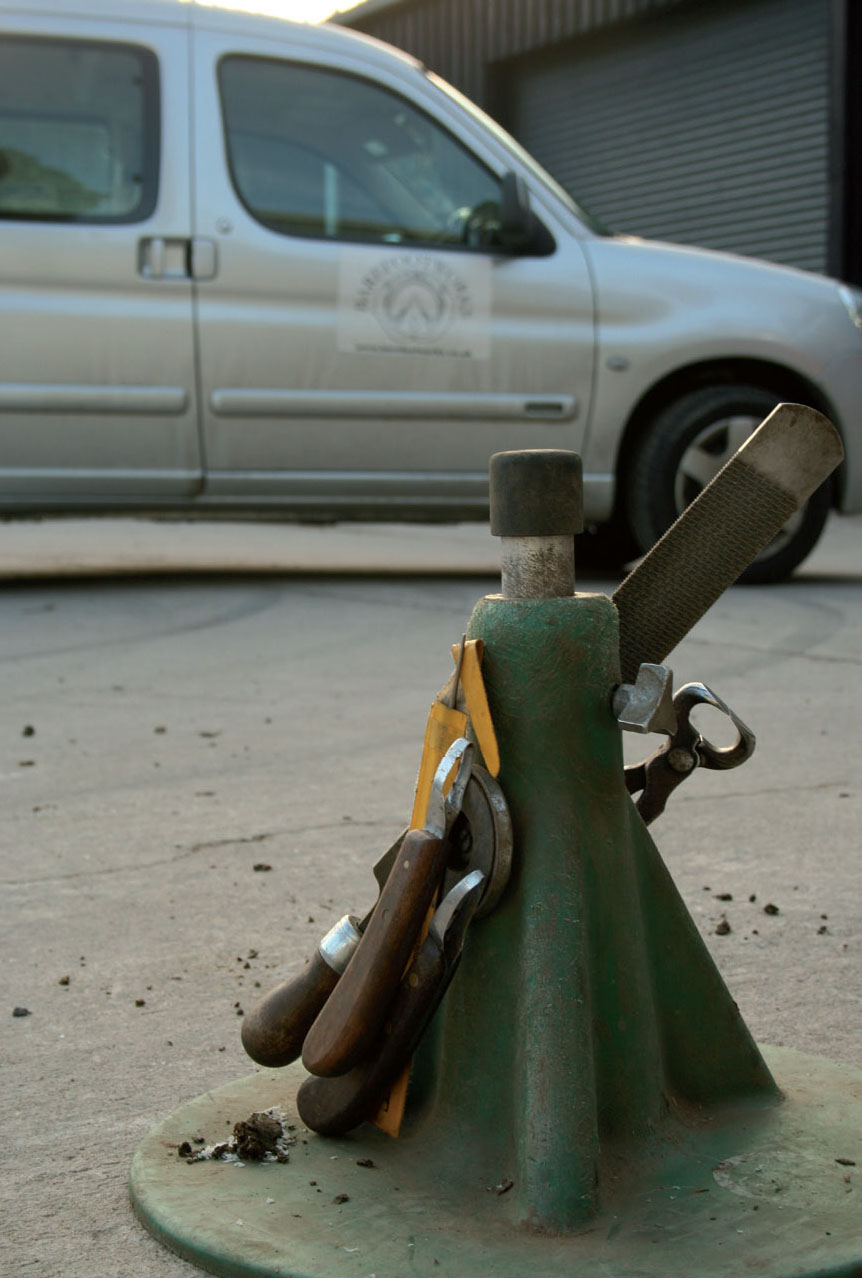
Modern equipment for hoof trimming.
Next page
